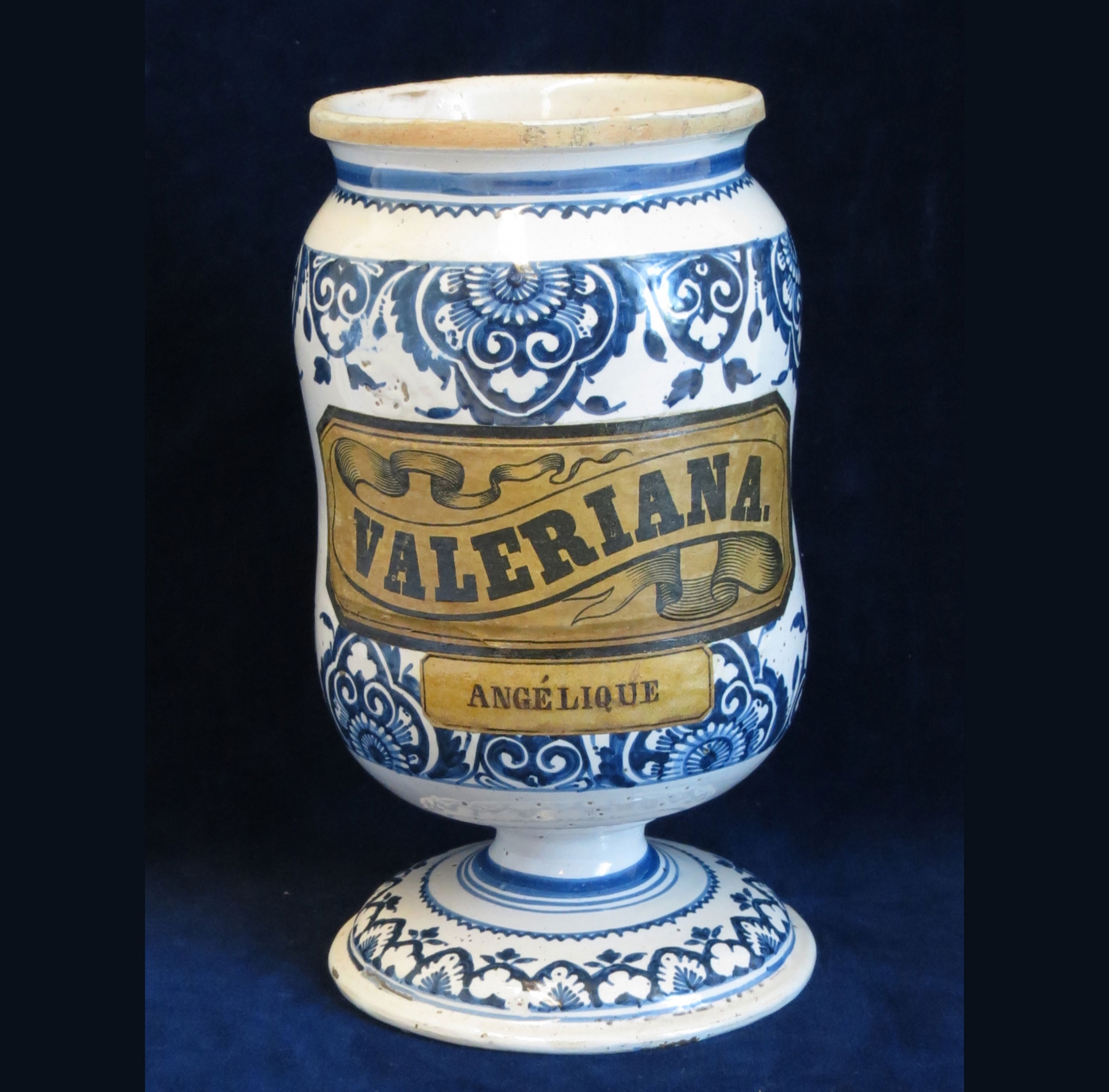Apothecary Jar
Artifact


Image
Video
Audio
 Activities
Activities
LOOK
Look closely at this jar. What do you think it was used for, and who might have used it? For clues, look at its size, what it’s made of, its decoration and the writing on the label.
THINK
Based on this jar and the background information found in this package, can you list some similarities and some differences between medicine in New France and today?
What do you think led to changes in medicine over time?
DO
Do you know of any other types of medicine that were available to patients in New France? Do some research, and present your findings to your class.
Details
 Materials
Materials - Ceramic
Historical Context
Choose one of the three levels below to match your needs.
- Apothecary jars like this one were labelled to make it clear what medicine they contained.
- An “apothecary” was like a pharmacy. It was also the name of the person who ran it.
- Hospitals often had their own apothecaries, but you still needed a prescription from a doctor to get medicine.
This apothecary jar would have contained herbal medicines used in New France. Labels on apothecary jars told people what was inside.
Apothecaries were like today’s pharmacies. They prepared and dispensed medicine to those with a prescription. Hospitals often had their own apothecaries, run by nuns with expertise in the preparation of medicines.
Cylindrical apothecary jars like this one contained specific ingredients. The contents were often printed on a label. This jar says “Valeriana” and “Angélique.” These names refer to two plants: valerian, which was used as a sedative, and angelica, which was used to treat a variety of conditions at the time.
Apothecaries were the pharmacies of their day. The three main functions of apothecaries in New France were to prepare, preserve and distribute medicines.
Hospitals such as the Hôtel-Dieu often had their own apothecaries, run by an apothicairaisse — a nun with expertise in the preparation of medicines. Just as today, a prescription from a doctor or surgeon was needed for certain medicines.
- Apothecary jars like this one were labelled to make it clear what medicine they contained.
- An “apothecary” was like a pharmacy. It was also the name of the person who ran it.
- Hospitals often had their own apothecaries, but you still needed a prescription from a doctor to get medicine.
This apothecary jar would have contained herbal medicines used in New France. Labels on apothecary jars told people what was inside.
Apothecaries were like today’s pharmacies. They prepared and dispensed medicine to those with a prescription. Hospitals often had their own apothecaries, run by nuns with expertise in the preparation of medicines.
Cylindrical apothecary jars like this one contained specific ingredients. The contents were often printed on a label. This jar says “Valeriana” and “Angélique.” These names refer to two plants: valerian, which was used as a sedative, and angelica, which was used to treat a variety of conditions at the time.
Apothecaries were the pharmacies of their day. The three main functions of apothecaries in New France were to prepare, preserve and distribute medicines.
Hospitals such as the Hôtel-Dieu often had their own apothecaries, run by an apothicairaisse — a nun with expertise in the preparation of medicines. Just as today, a prescription from a doctor or surgeon was needed for certain medicines.
Summary
- Apothecary jars like this one were labelled to make it clear what medicine they contained.
- An “apothecary” was like a pharmacy. It was also the name of the person who ran it.
- Hospitals often had their own apothecaries, but you still needed a prescription from a doctor to get medicine.
Essential
This apothecary jar would have contained herbal medicines used in New France. Labels on apothecary jars told people what was inside.
Apothecaries were like today’s pharmacies. They prepared and dispensed medicine to those with a prescription. Hospitals often had their own apothecaries, run by nuns with expertise in the preparation of medicines.
In-Depth
Cylindrical apothecary jars like this one contained specific ingredients. The contents were often printed on a label. This jar says “Valeriana” and “Angélique.” These names refer to two plants: valerian, which was used as a sedative, and angelica, which was used to treat a variety of conditions at the time.
Apothecaries were the pharmacies of their day. The three main functions of apothecaries in New France were to prepare, preserve and distribute medicines.
Hospitals such as the Hôtel-Dieu often had their own apothecaries, run by an apothicairaisse — a nun with expertise in the preparation of medicines. Just as today, a prescription from a doctor or surgeon was needed for certain medicines.
